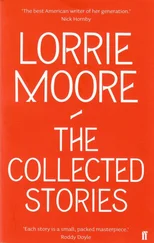Their next-door neighbor on Shawmut Way was an old woman named Mrs. O’Keeffe, who had come over from Ireland at ten years old, in 1910. She had worked as a maid in the same neighborhood David had grown up in, and then she met her husband and moved to Boston. This coincidence came up early in their acquaintance, and Ada watched David as he physically cringed. Discussions about his past were always an encumbrance to him, but from then on he had difficulty dodging Mrs. O’Keeffe, who wished frequently to reminisce with him about the other families who had occupied those homes. She had not known him but she had known his people. She would name the families of Gramercy Park as if counting her treasures. “And the Cromwells,” she would say, “what a beauty their daughter was. And those Byrons, and those Harts, and those Carringtons. .”
“Yes,” David would say, “I knew all of them, once.”
He graduated high school in 1943, right in the middle of the Second World War, which normally would have guaranteed a period of service. But David was, even at that age, nearsighted to the point of legal blindness without his glasses. Instead, therefore, he went to college. He chose Caltech — which further horrified his father, who had gone to Harvard, and his mother, who saw it as a vocational school, a school for the working class. There he majored in mathematics. He then found his way to the Bit, where he received a doctorate in applied mathematics, and where his work on GOPAC, an early computer system spearheaded by Maurice Steiner, earned him such quick fame in his field that he was given his own lab at the Bit by President Pearse at the age of thirty. It was named for Steiner, after his death, and with David at the helm, it quickly became known in the field. It was here in 1970 that he met Liston, then a young postdoc straight from her doctoral work at Brown, and here that they became friends. They were an odd pair: he was sixteen years her senior, but she was an old soul — both of them said it — with two children already and two more to follow. They spent a great deal of time together both in the lab and outside it. He fostered her already considerable talent, and spoke of her proudly as her role at the lab expanded. “The best pure thinker in the group,” he said of her often, including himself in the tally. At this time, Charles-Robert and Hayato had already been hired, and Frank came shortly thereafter. A rotating cast of postdocs, grad students, and short-lived hires came and went, but the five of them, plus Ada, were the core.
Ada loved the lab: it was a dark and cozy complex of offices housed within the Applied Mathematics Division of the Bit, which itself was housed within one of the Bit’s many Gothic buildings, and it felt more like a home than a workplace. For most of the fifties, sixties, and seventies, a mainframe computer dominated the largest room, toward the rear; by the late eighties it had become obsolete, but it remained in the lab as a sort of relic, a hulking, friendly dragon lying dormant in the back. The front of the lab was composed, with the exception of a larger conference room, of a warren of small rooms and offices, scattered with machines, some of which were perpetually stripped of their front panels, their innards revealed. Each office had been personalized over the years to reflect its owner. Hayato kept an easel in his, on which he sketched out problems and occasionally landscapes; and Charles-Robert had covered his walls entirely in maps; and Frank, the youngest, used to keep an elaborate network of hot plates and crock pots and electric kettles, on which he cooked surprisingly competent and complete meals for the whole department, until one day the building manager found him out and stopped him, citing fire department regulations. Liston’s office was sparse but for a record player on which she played albums by ABBA and U2 and the Police, and a beanbag chair in which Ada sometimes napped when she was smaller. David’s office consisted mainly of a collection of filing boxes that he added to yearly, too busy to go through them, too paranoid to dispose of their contents unexamined. The grad students worked part of the time across town at the Bit’s smaller campus in the Medical Area, and the other half in cubicles in the main room. Anyone else who came through the lab as a temporary or permanent hire was placed into one of the three empty offices that were otherwise used by David as schoolrooms for Ada.
Many of her early memories involved the floor of the lab, the feet and ankles of scientists all around her. When she was very young she was given antique models of elements to play with. She was given a kit of wooden parts to make up atoms. Hayato blew up latex gloves, stolen from the biology department, and made turkeys of them with a felt-tipped pen. She was not taught nursery rhymes about geese and kings but about molecules: Here lies dear old Harry, dead upon the floor. What he thought was H 2O was H 2SO 4 . She was named the mascot of the Steiner Lab, and there was a photograph of her dressed as a punch card to prove it.
She attended most formal meetings that the Steiner Lab conducted and she attended informal meetings, too, ducking in and out of offices at will, sitting still at the round brown table in the main room when the lab had lunch all together. And listening — always listening.
The theory of language immersion posits that a language is best learned by placing the learner into what is in effect a natural habitat, or a simulated habitat that strives for authenticity. Thus a student of Spanish will learn best not when she is taught to conjugate verbs but when she is surrounded by useful Spanish — not when she is taught Spanish for its own sake, but when she is taught every other subject in Spanish, too. More by default than intent, Ada was thus immersed in mathematics, neurology, physics, philosophy, computer science. She did not begin with Lisp, but with compiler design. In her physics lessons at home with David, she did not begin with s = d/t , but with the Grand Unified Theory. For the first years of her life, she did not know what she was hearing. Listening to David and his colleagues was like listening to radio chatter in a different language. And then, without knowing it or taking note of it, she began to be able to follow their conversations. By ten she was able to be a sounding board for her father as he worked out his ideas — not resolving them or bettering them, necessarily, but posing questions to him that were reasonable, and occasionally jarring something loose in him. When this happened, he reported Ada’s concern or comment to the rest of the lab with some seriousness at the next lab meeting, and a slow glowing warmth spread throughout her, because she had made herself useful to the group, whom she thought of, always, as her peers.
“A good question, I think, Ada,” David would say, and the rest of them would nod in agreement, and the group would move forward as one.
This was what Ada pictured when she thought of her father, the vision of David that she harbored and kept safe throughout her life, the idea pinned permanently to the sleepiest part of her brain: it was her father in his laboratory, or at Tran’s Restaurant; or in the library of the institute that employed him; or, rarely, in a crowd of friends; or, regularly, at his desk, in his small absurd office in their home, contemplating a chessboard, his head as bald and round and sturdy as a pawn’s. His woolen socks with holes in them. His hands the steeple of a church. He was tall and thin and rigorous in his studies and in his life, and he was inventive, and he was very warm and betrayed no one ever, and in Ada’s mind he was ethical beyond compare, and he had a habit of rubbing his hands together quickly when he was delighted or moved, and he was quick and spry and gentle and able with his limbs and head. He was dexterous, and his fingernails were clean, and he was wise, and he was intent upon seeking out the best and most beautiful versions of pieces by Chopin, Schumann, Schubert, and Bach, and he knew excellent riddles, and his name was Dr. David Sibelius, and she never called him anything but David.
Читать дальше












